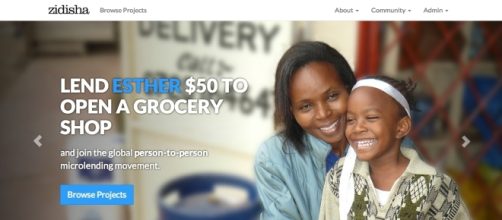Businesses require money to begin operations and Zidisha prides itself on being the first global peer-to-peer microlending platform that connects lenders and borrowers directly. Since 2009, the company has facilitated more than $6 million in direct loans between 58,000 members--many in poor countries--and enables borrowers to attain loans at 0 percent interest rates. Moreover, their repayment rate of 85 percent+ is maintained by the community-oriented setup that helps people and their businesses. Recently Zidisha's founder, Julia Kurnia, spoke about the company and her hopes for its future:
Origins
Blasting News: When wasZidisha started and why was that name chosen?
Julia Kurnia (JK): In 2006, I was volunteering in Senegal, Africa, raising microloans for women in rural villages through Kiva. I worked at a website that let local microfinance bankscrowd-fund lending capital.The women would use the loans to start and grow small businesses, generating much-needed income for their families. When I returned to the United States, we registered a local microfinance organization and hired a loan officer to manage the loans and to liaise with Kiva on the villagers' behalf.Though we tried to be frugal, this ended up being expensive due to administrative costs. To be sustainable, we would have to charge the women more than 30 percent interest, almost enough to leave them poorer than they were before taking the loans!
This is the story of microfinance in general: the world's poorest people are paying the highest interest rates - the global average is 35 percent, but rates of 80 percent - 100 percent are not uncommon. Most of the cost comes from the expensive infrastructure used to manage traditional microloans. Over the next few years, the Internet began to be adopted by ordinary people in the world's poorest countries. Internet-savvy borrowers no longer needed expensive local intermediary banks to liaise with microloan crowdfunding platforms on their behalf.We saw an opportunity to use the Internet to eliminate the intermediary bank and link the lender and the borrower directly via a person-to-person microlending community.
Eliminating the intermediary bank allowed us to reduce the cost of each loan to just 5 percent. In 2009, we disbursed our first loan to a Masai nomad in a remote part of Kenya, over a day's journey from any bank but that had access to the Internet and to the mobile phone money transfer service we use to send loan payments. We named the organization “Zidisha,” which is Swahili for "grow," as in an investment, business or quality-like prosperity.We now have more than 55,000 members in 157 countries and have raised loans for more than 28,000 small businesses around the world.
Present
BN: How, exactly, doesZidisha work?
JK: Lenders anywhere in the world can visit our website and browse loan proposals written directly by disadvantaged entrepreneurs in developing countries.Each lender can lend as little as a dollar to help crowd-fund a loan project.
We send the funds directly to the borrower, and as the borrower repays, we return the funds to lenders.Lenders can either withdraw the repayments, or use them to fund new loans. This is a high-impact way to do philanthropy because the funds keep being recycled into new loans;$50 put into a Zidisha loan fund generates on average $750 worth of loansin five years! Lenders can also dialogue directly with the borrowers.
BN: Thus far, what has been the most rewarding part of working for this organization?
JK: Seeing our community--lenders, borrowers, and volunteers--overcome vast geographic and social distances to connect and add value to each other's lives.
Future
BN: Where do you hope the company will be 10 years from now?
JK: We'd like to be able to fund everyone who applies and also expand to offer lending services in more developing countries. If we can help people improve their quality of life, then building Zidisha is time well spent.

